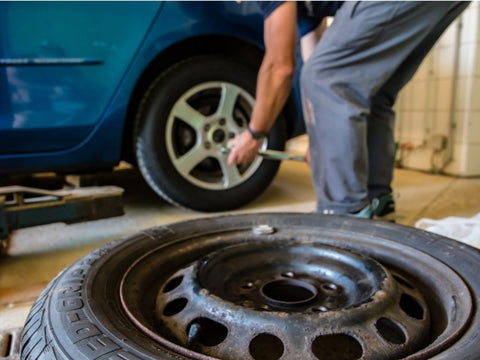The Top 3 Tire Inspection Ways You Need to Stay Safe on the Road
When it comes to road safety, one crucial aspect that often gets overlooked is tire maintenance. Your tires are the only point of contact between your vehicle and the road, making regular inspections imperative for a safe driving experience.
Method 1: Visual Inspection
Visual inspection is the first line of defense against potential tire issues. Take a few minutes regularly to visually examine your tires. Look for signs of wear, damage, or any irregularities in the tread pattern. Check for objects lodged in the tire and ensure there are no bulges or cuts. If you notice any of these issues, it's crucial to address them promptly to prevent further damage.

Method 2: Tire Pressure Check
Maintaining the proper tire pressure is essential for both safety and fuel efficiency. Use a reliable tire pressure gauge to check the pressure regularly. Under-inflated or over-inflated tires can compromise your vehicle's handling and increase the risk of a blowout. Refer to your vehicle's manual for the recommended tire pressure and adjust accordingly. This simple step can significantly enhance your safety on the road.

Method 3: Tread Depth Measurement
Tread depth directly affects your vehicle's traction on the road, especially in wet or slippery conditions. To measure tread depth, use a tread depth gauge or the penny test. Insert a penny into the tread with Lincoln's head facing down. If you can see the top of Lincoln's head, it's time to replace your tires. Adequate tread depth is crucial for effective braking and handling, so don't neglect this aspect of tire maintenance.

Advanced Inspection: Using Thermal Camera
In the realm of tire inspection, staying ahead of potential issues is the key to road safety. While visual checks, pressure assessments, and tread depth measurements are integral, an advanced approach involves incorporating cutting-edge technology, such as a thermal camera. This sophisticated tool elevates your tire inspection game by unveiling hidden irregularities that might escape the naked eye.

1. The Power of Thermal Imaging
Traditional inspections may not uncover internal problems or variations in temperature that hint at underlying issues. This is where a thermal camera proves invaluable. By capturing thermal images of your tires, you gain insights into temperature disparities that may signal potential concerns, such as uneven wear, brake system anomalies, or internal damage.

2. How to Use a Thermal Camera for Tire Inspection
- Preparation: Before starting, ensure that your vehicle has been stationary for a reasonable amount of time to allow the tires to cool down. This enhances the camera's ability to detect temperature variations accurately.
- Setting Up the Camera: Position the thermal camera at a suitable distance from the tires, ensuring a clear view of the entire tire surface. Many thermal cameras are user-friendly, with intuitive interfaces that make navigation a breeze.
- Capturing Thermal Images: Take thermal images of each tire systematically. Pay attention to the heat distribution across the tire's surface. Hot spots or uneven temperature patterns could indicate issues that warrant further investigation.
- Interpreting Results: Familiarize yourself with the thermal images and understand the color-coded temperature representations. Anomalies, depicted by variations in color or intensity, may point to specific problems, allowing you to address them proactively.
3. Benefits of Thermal Camera Inspection
- Early Detection: Thermal cameras excel at detecting problems in their early stages. Identifying issues before they escalate can prevent unexpected breakdowns and enhance overall road safety.
- Comprehensive Assessment: Unlike traditional methods that focus on visible signs, thermal imaging provides a holistic view of your tires, including internal conditions. This comprehensive assessment ensures that no potential problem goes unnoticed.
- Time and Cost Savings: Detecting issues early not only prevents safety hazards but can also save you time and money in the long run. Addressing minor problems promptly can avoid more extensive and expensive repairs later.

Regular tire inspection is a small investment that pays significant dividends in terms of safety on the road. By incorporating visual inspection, tire pressure checks, and tread depth measurements into your routine, you're taking proactive steps toward preventing accidents and breakdowns. For those who want to go the extra mile, utilizing a thermal camera adds an advanced layer of scrutiny, ensuring that even hidden issues are brought to light.
Your safety on the road starts with the condition of your tires. Make tire inspection a habit, and you'll not only extend the life of your tires but also enhance the safety of your journeys. Stay proactive, stay safe.





